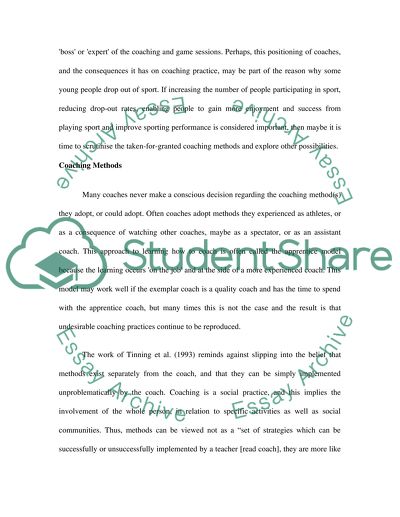Cite this document
(“Coaching Principles and Practice Essay Example | Topics and Well Written Essays - 2750 words”, n.d.)
Coaching Principles and Practice Essay Example | Topics and Well Written Essays - 2750 words. Retrieved from https://studentshare.org/sports-and-recreation/1522949-coaching-principles-and-practice
Coaching Principles and Practice Essay Example | Topics and Well Written Essays - 2750 words. Retrieved from https://studentshare.org/sports-and-recreation/1522949-coaching-principles-and-practice
(Coaching Principles and Practice Essay Example | Topics and Well Written Essays - 2750 Words)
Coaching Principles and Practice Essay Example | Topics and Well Written Essays - 2750 Words. https://studentshare.org/sports-and-recreation/1522949-coaching-principles-and-practice.
Coaching Principles and Practice Essay Example | Topics and Well Written Essays - 2750 Words. https://studentshare.org/sports-and-recreation/1522949-coaching-principles-and-practice.
“Coaching Principles and Practice Essay Example | Topics and Well Written Essays - 2750 Words”, n.d. https://studentshare.org/sports-and-recreation/1522949-coaching-principles-and-practice.


